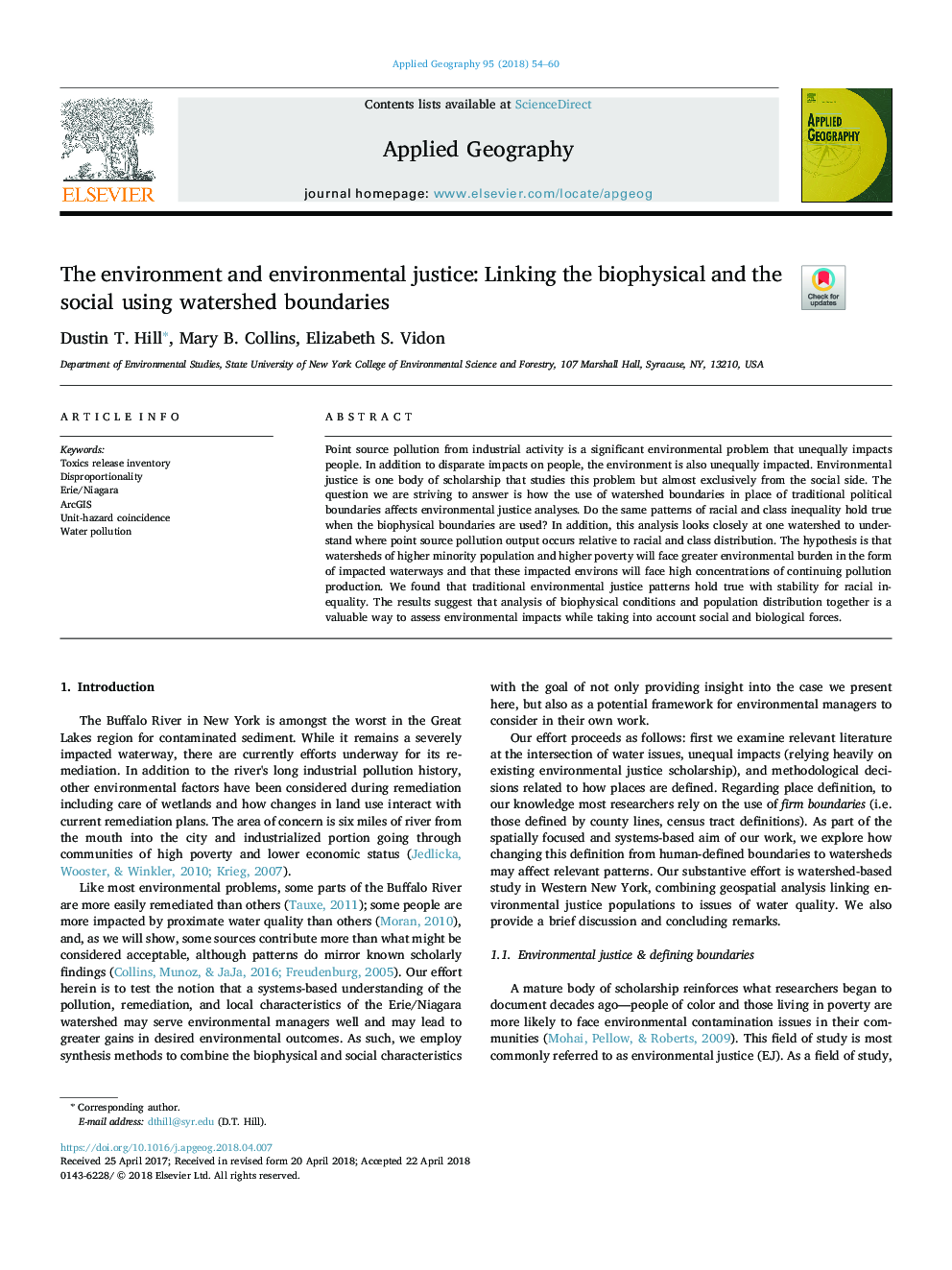| Article ID | Journal | Published Year | Pages | File Type |
|---|---|---|---|---|
| 6538264 | Applied Geography | 2018 | 7 Pages |
Abstract
Point source pollution from industrial activity is a significant environmental problem that unequally impacts people. In addition to disparate impacts on people, the environment is also unequally impacted. Environmental justice is one body of scholarship that studies this problem but almost exclusively from the social side. The question we are striving to answer is how the use of watershed boundaries in place of traditional political boundaries affects environmental justice analyses. Do the same patterns of racial and class inequality hold true when the biophysical boundaries are used? In addition, this analysis looks closely at one watershed to understand where point source pollution output occurs relative to racial and class distribution. The hypothesis is that watersheds of higher minority population and higher poverty will face greater environmental burden in the form of impacted waterways and that these impacted environs will face high concentrations of continuing pollution production. We found that traditional environmental justice patterns hold true with stability for racial inequality. The results suggest that analysis of biophysical conditions and population distribution together is a valuable way to assess environmental impacts while taking into account social and biological forces.
Related Topics
Life Sciences
Agricultural and Biological Sciences
Forestry
Authors
Dustin T. Hill, Mary B. Collins, Elizabeth S. Vidon,
